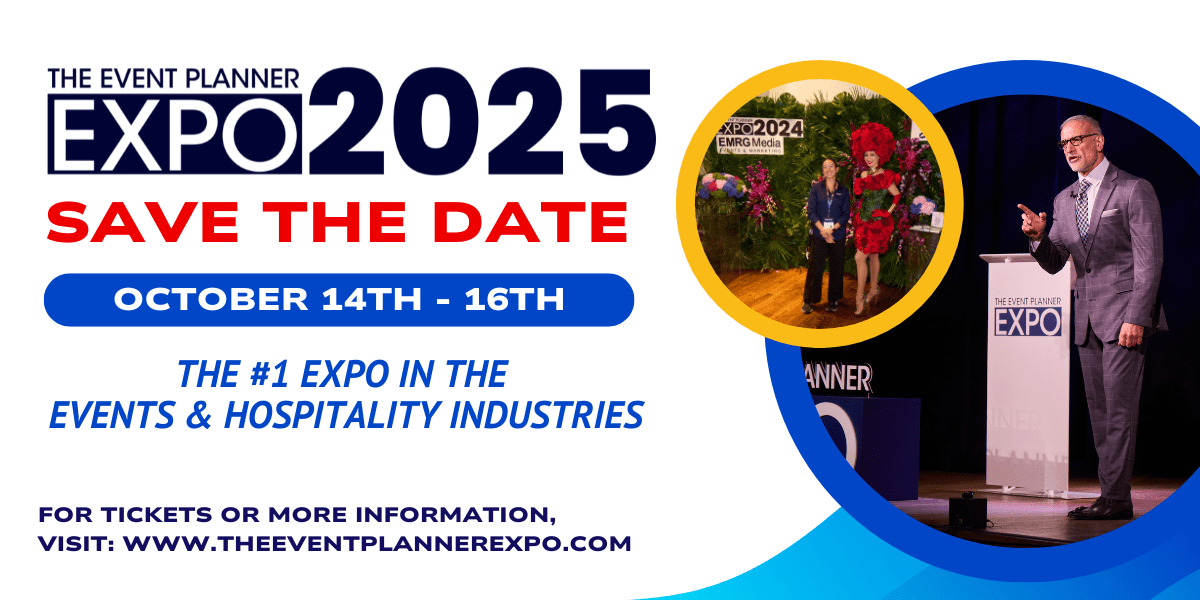When Should Event Marketing Companies Use Experiential Events Marketing?
We’re living in a time where getting the consumers’ attention is nearly impossible for Event Marketing Companies in New York. Because of that, it’s easy for brands to fall in love with the concept of experiential marketing.
Live, memorable, and immersive experiential marketing campaigns will convey your message and eliminate distractions. However, this strategy is lacking a standard definition and can be confusing to Event Marketing Companies in New York if they’re new to it.
That’s why The Event Planner Expo team felt it would be wise to define experiential marketing, review the various types of experiential marketing, discuss how they differ from standard marketing methods, or general live events. We’ll also go over when it’s a good idea to implement an experiential strategy instead of other event marketing methods.
So, the point of this post is to get a better understanding and assist Event Marketing Companies understand the true meaning of experiential event marketing.
The Definition of Experiential Marketing
Experiential events marketing is a strategy that’s used to engage consumers by deploying branded experiences. At times, this method of marketing is referenced as “live marketing” or an “event marketing experience.” The focus is to produce a memorable event that will impact the lives of the consumers. In essence, you want to inspire invitees to share event information with their friends by word of mouth or online. These experiential experiences should include an event, a portion of an event, or some sort of pop-up activation that is not linked to an event.
The principal of experiential marketing is all about submerging consumers in a live experience. It’s probably very similar to the approach you’re using when creating your event experience.
There are two ways that experiential marketing campaigns intersect with events. An event can actually be a sector of a larger experiential marketing approach such as the launch of a pop-up shop. A brand activation that is not as big in size would be something like an on-site art installation.
Whatever your case falls under, you’ll need to truly understand the goal for each event marketing campaign. There are a couple of ways that Event Marketing Companies can measure the strength of the impact their campaigns are producing. They can use surveying after the close of an event to get feedback from attendees, and they can calculate results through social media by following the events hashtag to see what’s being published about the event.
Is Experiential Marketing for You?
When is it wise for Event Marketing Companies to integrate an experiential marketing approach into an event? Well that depends on the timeline, goal, and resources.
Experiential marketing is the best way to humanize a sponsor or a brand, by designing experiences that will leave people with a lasting and positive impression about a company. Event though these experiences are in person, you need to lure your prospects in through content that amplifies your efforts across social media platforms.
You can’t just offer attendees any old giveaway and think it’s a wrap. That’s not what defines an experiential interaction. You must create touch points that will engage attendees in ways they can’t foresee. That’s not only a benefit for the organizer, but also for the event, and the sponsors. So be sure to have a sufficient budget in place or at least lure in a big-named sponsor to back your efforts.
Examples of Event Marketing Companies Who Used Experiential Marketing
It is crucial that you know when to and when not to use experiential marketing as a strategy. In order to help you understand the difference, we’ve included some examples below of successful experiential practices and a couple of failures.
Success: Gilmore Girls’ Luke’s Diners
To create excitement and build a true buzz during the lead up of the anticipated premiere of “Gilmore Girls: A Year in the Life,” the team over at Netflix produced 200 pop up Luke’s Diners around the U.S. to offer complimentary coffee to Gilmore fans. It was extremely successful, and every location had long lines of customers which resulted in a lot of social engagement (just the Snapchat filter alone was viewed 880,000 times).
Fail: Jagermeister’s poison pool party
In a catastrophic blunder where nine people were sent to the hospital, a Jagermeister pool party in Leon, Mexico utilized liquid nitrogen to insert fog into the setting. What the organizers didn’t think about was the fact that liquid nitrogen responds to chlorine by shifting the present oxygen, which caused guests to have trouble breathing faster than the blink of an eye.
Success: Refinery29’s 29 Rooms
For over three years, lifestyle brand Refinery29 has introduced its 29Rooms event, which is an assembly of 29 various rooms of curated and branded experiences, that are all linked by a central theme to produce a “multi-sensory playground.” The sold-out event this year will highlight a “Turn It into Art” theme as they launch their first appearance on the West Coast.
Fail: Betfair’s Octopus traffic chaos
Gambling firm Betfair made plans to use a huge model of an octopus to encourage betting during the 2014 World Cup. However, during the transport, the octopus broke down in London’s busy Oxford Circus, which caused traffic to jam up, and that led to the company earning a lot of unwanted media coverage. Fortunately, they publicly apologized and that helped them turn things around a bit.
The moral of the story? When Event Marketing Companies integrate experiential event marketing, it’s imperative that they ensure that convenience and safety are never at risk. You must set the event goal to appealing to your guest’s five senses and bring their dreams to life.
In 2019, experiential event marketing is booming and Event Marketing Companies from around the world will show you just how it’s done at The Event Planner Expo. Make sure to attend this year’s show to safeguard your progress as an event pro!
